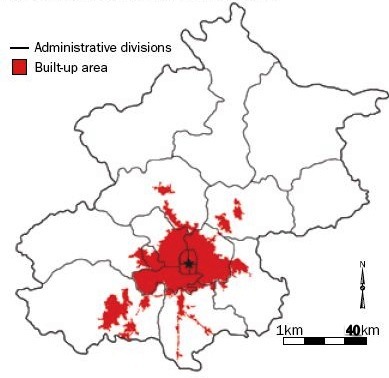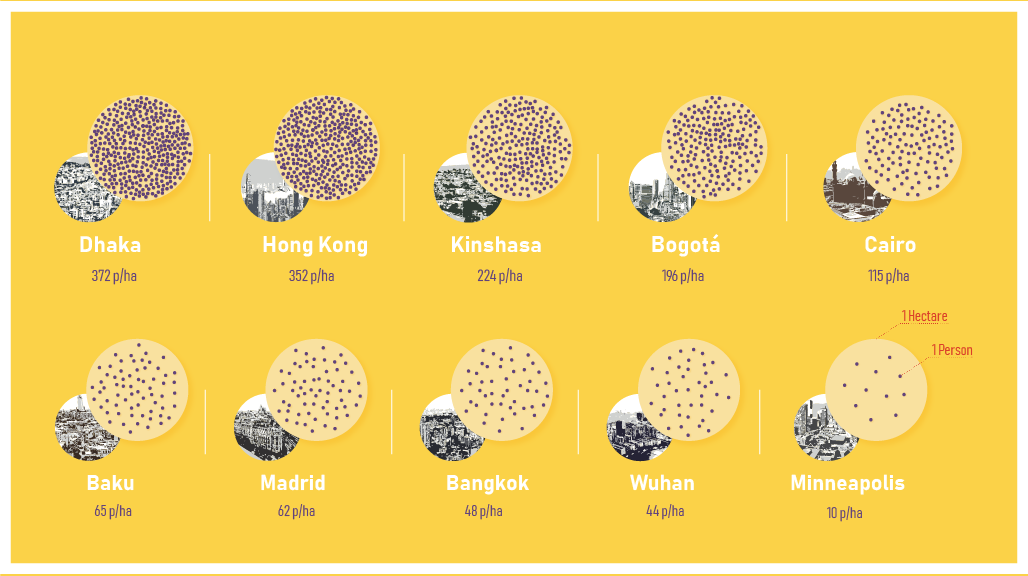Which City is Denser: Los Angeles or Beijing?
+ Brandon Fuller
The answer depends on how you define a city’s urban extent.
Let’s start by defining the city as the area within its municipal boundary and then compare the densities of LA and Beijing around the year 2000. In 1999, Beijing’s municipal population was approximately 11.9 million and its municipal area was 16,800 sq km. In 2000, LA’s municipal population was about 3.7 million and it’s municipal area was 1,415 sq km.
Under this approach, the ratio of population to area in Beijing was 708 people per sq km. In LA this ratio was much higher, 2,615 people per sq km. The notion that, in the not too distant past, LA was more than three times as dense as Beijing will strike many people as odd. We associate dense urban environments with the cultures of Asia. Americans are supposed to prefer lower-density, some would say sprawling, settlements. LA is supposed to be the poster child.
There are two issues to with the municipal approach:
- Urban extent does not necessarily coincide with municipal boundaries. LA is a good example. People often use “LA” as shorthand for an urban area that extends well beyond the municipal boundary of LA itself—this broader urban area includes cities such as Burbank, Long Beach, and Pasadena.
- Municipal land is not necessarily urban land. Beijing illustrates this point nicely. It’s generous municipal boundary encompasses cultivated land, pastures, forests, farms, villages, intercity roads, and nature areas—in other words, vast areas of municipal Beijing are non-urban. (The image below, from Solly Angel’s Planet of Cities, shows Beijing’s municipal boundary, its 16 district boundaries, and its built-up urban area.)

We might do better to think of a city as the extent of its built-up area. Built-up area includes impervious surfaces such as pavement, rooftops, and compacted soils—surfaces that we can identify and measure with satellite imagery. Population figures can then come from the administrative divisions that correspond to the measured built-up area.
This is the approach that Solly Angel and his coauthors used in compiling The Atlas of Urban Expansion. According to their calculations, the built-up area of LA was approximately 3,851 sq km in 2000 and the population corresponding to this built-up area was approximately 13.2 million. In 1999, Beijing’s built-up area was about 1,576 sq km and the corresponding population was approximately 11.9 million (recall that, unlike LA, Beijing’s built-up area is captured entirely by its municipal boundary).
Using this approach, LA’s built-up area density was approximately 3,428 people per sq km in 2000 and Beijing’s built-up area density was about 7,551 people per sq km in 1999. In other words, Beijing’s built-up area density was more than twice as high as LA’s—much more in line with visual intuitions.
Addendum: UP scholar Alain Bertaud uses built-up area to measure city densities as well. Here is Alain’s comparison of built-up area densities for 49 global cities.

